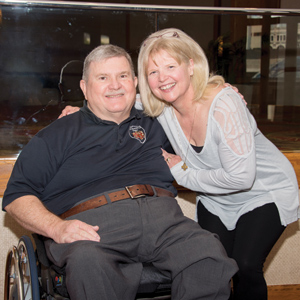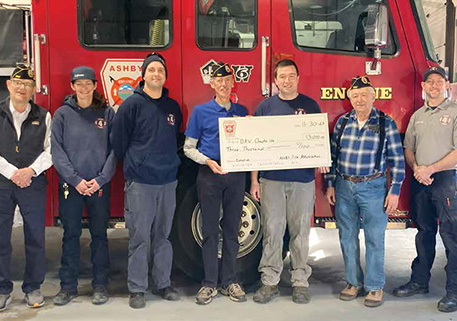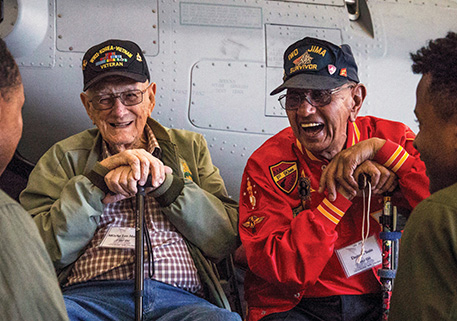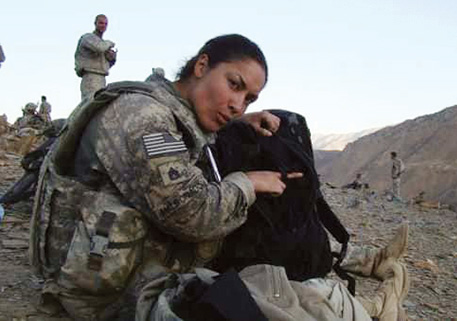
VA alternative therapies result in major successes
DAV Past National Commander and Marine Corps veteran Brad Barton was injured during the siege of Khe Sanh in 1968. Halfway through the 77-day battle, a North Vietnamese mortar round exploded outside his tent, sending shrapnel through his back and severing his spinal cord. He has been in a wheelchair ever since.
“It was a major adjustment, but what helped me through the whole experience was the fact that I was so lucky and so grateful that I had survived my injuries,” said Barton. “So I was highly motivated when I returned through the hospital system and went through rehabilitation to get back some normalcy in my life.”
Barton has seen, as he says, “the best and the worst of [the] VA” over the years. Much of the system has changed since his injury—from a time when there was only a single type of wheelchair available to now, when disabled veterans have a wealth of customized and durable medical equipment, devices and prostheses.
But there is another tool in the VA’s arsenal that’s proving to be just as valuable. In 2018, the Department of Veterans Affairs announced it would be designating 18 facilities as Whole Health Flagship sites, signaling a shift from a health care system focused mainly on disease and injury treatment to one that addresses veterans’ physical, mental, spiritual and environmental needs. The program includes things like acupuncture, yoga and tai chi, massage therapy, clinical hypnosis and biofeedback, all available to veterans as part of their personalized health plan.
As part of this program, Barton enrolled in an eight-week mindfulness training program in which he was led through guided meditation, focusing on pain he was experiencing and tuning in to how his body was reacting.
“I remember after the first session, I woke up in the middle of the night and my hip was killing me. But instead of letting it disrupt my sleep, I said, ‘OK, where’s the pain at? How bad is it?’” said Barton. “And I fell right back to sleep. It didn’t really disrupt my sleep at all. It was totally unbelievable to me.”
Barton’s experience is not a fluke, but rather one promising anecdote about how the VA’s Whole Health program is helping veterans better manage pain and reduce reliance on medication alone.
“The data supports a threefold reduction in opioid use among veterans with chronic pain who used Whole Health services compared with those who did not,” said Heather Malecki, director of integrative health and wellness at the Washington, D.C., VA Medical Center—one of the original flagship locations.
A VA report released in January noted that, among comprehensive Whole Health users—classified as patients who went to eight or more whole health visits—opioid use decreased 38% compared with the 11% increase among those who did not use Whole Health. According to the VA, veterans are twice as likely to die from accidental overdoses compared to the general U.S. population.
“Nobody is saying we’re going to fix it, we’re going to eliminate all pain, we’re going to eliminate all mental health concerns, we’re going to eliminate any chronic conditions,” said Malecki. “It’s reframing the way patients view their own pain experience and giving them a bigger toolbox to manage it.”
And better pain management isn’t the only benefit of the program. Many of the veterans in the VA’s Whole Health program report weight loss and improved mental health as well as better vital signs and diagnostic test results.
Marine Corps veteran John Pearson is a former cancer patient who was exposed to Agent Orange in Vietnam. He has been taking tai chi classes regularly through the D.C. VAMC and says the program has drastically improved his overall health.
“When they told me my blood pressure was 104 over 56, I almost fell out of the chair,” said Pearson. “My kidney function has improved, too, and my A1C is now at 7, down from a 12. I realized if I want to live, I’ve got to do this.”
Whole Health has also shown significant success in helping to reduce outpatient pharmacy costs by 9% annually for those with mental health conditions and 11.5% each year for those with chronic pain.
“We understand some people are skeptical about whether or not these alternative approaches can really help reduce their pain,” said Deputy National Legislative Director Adrian Atizado. “But especially for those veterans who may carry a higher risk for opioid addiction, like combat veterans, we have to use every tool in the arsenal, and this approach seems to be working.”
Malecki said the VA expects 44% of veterans with chronic pain to engage in Whole Health services by the end of 2020, an indication that veterans are not just seeing the benefits but are sharing their experiences with others.
“We do a ‘Taking Charge of My Life and Health’ group where the veterans help each other make goals,” said Army veteran Kathy Bixby, a Whole Health nurse educator at the D.C. VAMC. “They have a week or two in between to come back and talk about how they succeeded or what were the barriers. So really, they’re paying attention to what they want their health for, and they’re recognizing an opportunity to make change.”
“We’re giving them skills to be able to know how to do that and be successful,” said Bixby, who herself lost 50 pounds thanks to her experience with the program. “And they’re getting to talk about it among their peers. It’s really very powerful.”






